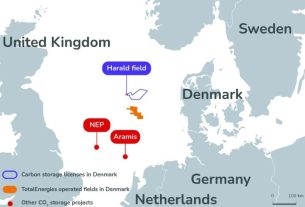Germany – The new study “CO2 reduction potential of the chemical industry through CCU” looks into the GHG reductions that can be achieved in the global chemical and derived material industries if the entire demand for embedded carbon is met solely through CO2 rather than from fossil sources.
The use of fossil carbon is heavily reliant on the production of chemicals and derived materials today. Hydrocarbons are used in industrial processes to provide process energy and embedded carbon as a feedstock for a variety of substances, building blocks, intermediates, and derived materials such as polymers and detergents.
As a representative pathway for renewable carbon, methanol (CH3OH) is thought to cover the needs for hydrocarbons for chemicals and derived materials among the various chemical intermediates. Assigning methanol a central role in supplying the chemical industry of the future is a plausible scenario.
CO2 capture via a combination of direct air capture (DAC) and capture from various point sources, hydrogen supply, and the hydrogenation reaction for methanol synthesis are all part of the CCU-based production route being investigated. GHG emissions from CCU-based methanol synthesis are dependent on renewable energy production emissions. When using current energy supply based on photovoltaics, emissions from CCU-based methanol could be 67 to 77 percent lower than emissions from releasing embedded carbon from fossil fuels. With improvements in renewable energy production, the reduction could be as high as 96 to 100 percent.
Meeting demand
By 2050, the annual global demand for carbon embedded in chemicals and derived materials could have risen from 450 million tonnes of carbon (Mt C) to 1,000 Mt C. Meeting this demand with CCU-based methanol would necessitate a massive demand for renewable energy of 29.1 PWh/year. Massive efforts would be required to deploy enough renewable energy. If desert photovoltaics are used to generate hydrogen, 1.3 percent of the Sahara’s land area would be required to meet the demand.
Despite this, a fully decarbonized energy supply can save 3.7 Gt CO2/year. Even when compared to today’s global emissions of 55.6 Gt CO2 eq/year, these GHG emission reductions are significant. The findings show that CCU is a promising technology for reducing GHG emissions related to embedded carbon supply – assuming there is enough renewable energy available. Carbon from CCUs will be a critical component of a future built on renewable carbon, complementing carbon from recycling and biomass. Global PV and wind capacity must be rapidly expanded to allow CCU to contribute to a climate-friendly supply of feedstock for the chemical industry.




